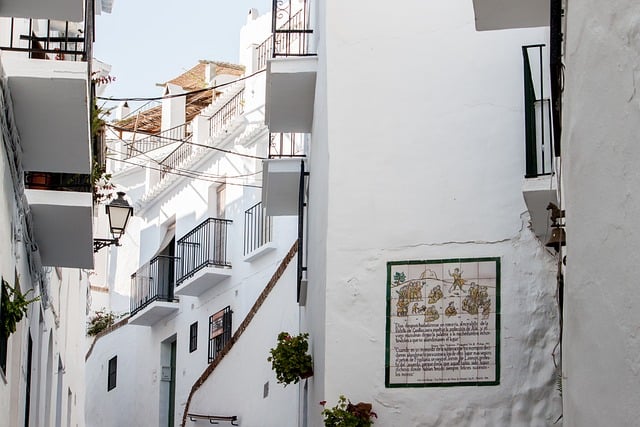Originally brought to the table last February, Spain’s long anticipated housing will not be approved before the end of 2022, as the government had hoped.
The sweeping legislation, which hopes to regulate evictions, increase access to social housing, cap and in some cases even freeze rental prices, as well as try to do something about Spain’s dwindling public housing stock, among many other things, has proved divisive on many levels. Not only has the proposed legislation been criticised by the rental sector and the General Council of the Judiciary (CGPJ), but it has threatened to drive a wedge between government coalition partners and has had as many as 800 amendments proposed.
Spain’s Minister of Transport, Mobility and Urban Agenda, Raquel Sánchez, confirmed in a press conference that though the bill will not be rubber stamped before New Year, as was expected, she hoped the “green light” will come from the Cortes Generales in early 2023.
“It is true that we expected to have this law approved before the end of this year and it may not be so, but we are confident that it will be at the beginning of next year,” Sánchez told the Spanish press after a meeting of the Spanish Cabinet.
Sánchez also denied that the widespread criticism and hundreds of proposed amendments mean the bill is dead or blocked, and stressed that the government has been working “intensely” with other parliamentary groups to get it over the line.
The draft bill has been heavily criticised by Partido Popular (PP) members, who argue the bill in its current form is an attack on private property and enterprise, and also the rental sector, who question the legality of rental freezes and caps, and even the Spanish judiciary have voiced concerns about the legal implications of the bill on Spain’s autonomous regions.
Clearly, the draft housing bill has upset a lot of people. But what is Spain’s new housing law and why has it proved divisive so far?
The Local breaks down the six key proposals below:
Public housing stock
The law proposes that all new housing developments must set aside 30 percent of their new builds for public housing. Of that 30 percent, 15 percent must go to social renting.
At present Spain has a paltry amount of social housing, less than 300,000 units in its public stock, which means that only 1.6 percent of households are eligible for public housing, compared to around 10 percent in many European countries.
‘Stressed’ markets
Housing administrations will have the power to declare areas ‘stressed’ residential markets for three years, the duration of which may be extended annually if the circumstances persist. If an area is declared ‘stressed’, area specific action plans will be put in place to remedy the imbalances in the municipal rental market, which could include freezing or limiting rental prices.
For an area to qualify as ‘stressed’, certain conditions must be met such as the cost of housing in the area (whether mortgage payments or rent and utility bills) surpassing 30 percent of the average net income of households in that area. Similarly, rental prices in relation to the regional CPI increase will also be factored in, though it remains unclear exactly how localised these ‘stressed’ markets would be and if it would be on a municipal or district level.
Rental caps
For residents in areas deemed ‘stressed’, pre-existing tenants will be able to extend their current contract on an annual basis and for a maximum period of three years and effectively cap their rent, under the proposed law.
Vacant housing
In a bid to tackle Spain’s social housing dearth and use up some of the reported 3 million empty homes in Spain, local councils will, under the new legislation, have the power to implement a surcharge of up to 150 percent on the Property Tax (IBI) quota. This would be levied on homes that have been empty for more than two years without good reason, for property owners with a minimum of four homes.
If the property has been empty for three years, the surcharge could reach 100 percent, and there could also be an additional 50 percent rise in the case of properties whose owners have two or more flats in the same municipality.
Tax benefits for small landlords
Smaller landlords (deemed those with fewer than 10 properties) will be eligible for discounts and new tax incentives to lower the rental price of their properties
Though yet to be finalised, the draft proposes a 50 percent rebate to owners who rent out their property, and 70 percent if the property is rented for the first time to young people between 18 and 35 years old, or if it is a new contract with improvements or refurbishments.
The rebate could be 90 percent if the property is rented in a ‘stressed’ residential area.
Evictions
The bill also seeks to safeguard eviction procedures to protect vulnerable households and guarantee communication between judicial bodies and social services by introducing injunctions to allow a full assessment of the situation to be made and, if necessary, swiftly attend to renters in vulnerable situations whether it be economically or socially.
READ ALSO: What changes about renting and buying property in Spain in 2023?




 Please whitelist us to continue reading.
Please whitelist us to continue reading.
My Landlord says the 2% maximum increase doesn’t apply in my case. It’s only for landlords that own 10 or more properties – so he increased my rent last July, 2022 by 8.3%.
Is this accurate?